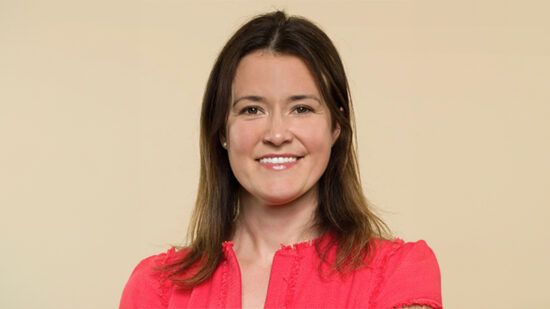Investment firms were urged to take a more unified approach to different sustainability disclosure metrics and transition planning to avoid ” an inefficiency of differing standards floating around” at City Week’s 2024 Climate Change and Natural Capital leaders summit this week.
Government ministers, regulators and leaders of financial institutions from across the world gathered to discuss the crucial role the financial community has in tackling climate change and biodiversity loss.
Below, PA Future outlines some of the key takeaways from the conference, including the convergence of global sustainability reporting, barriers and progress in the UK’s transition and adaptation planning, and a look ahead to COP29.
Convergence of regulation
Over the course of two panel sessions, a lot of discussion surrounded the convergence of different global regulations and reporting metrics – a hot topic, given the acceleration of new reporting standards being introduced and the already stretched resources at companies and financial institutions.
Christy Goldsmith Romero, commissioner of the US Commodity Futures Trading Commission, noted an interest in seeing how various recommendations play out, given the different local contexts and politics globally.
“There’s currently a patchwork of regulation, with the EU and Corporate Sustainability Reporting Directive (CSRD) and the broad, detailed and granular sustainability disclosure requirements going into effect right now. And then, on the other end, you’ve got the SEC, which has had a journey of its own on its climate disclosure policies,” said Romero.
“You might think this patchwork would lead to some sort of race to the bottom, with lots of global companies exposed to lots of different jurisdictions and trying to do the minimum possible to comply. But actually, and it’s a little bit surprising to me, but it’s really striking the opposite is happening, and there’s actually a race to the top. That’s a good thing, and it’s a sign that companies have realised the clearer they are on climate, the more capital they’ll be able to access and the more customers they’ll be able to sell to. That makes me optimistic.”
IFRS S3 in the works?
Later, Sacha Sadan, director of ESG and the UK’s Financial Conduct Authority, expressed his view that the Taskforce on Nature-related Financial Disclosures’ (TNFD) recommendations won’t end up being a separate document to the Taskforce on Climate-related Financial Disclosures’ (TCFD) reporting standards, a view echoed by David Craig, CEO of the TNFD.
He said when the TNFD recommendations were in development “we recognised the TCFD was an amazing place to start, and we reused all of their disclosure recommendations before adding three of our own”. Recently, they’ve received feedback from early adopters that they are combining their reporting teams for both TCFD and TNFD, given the alignment between the two.
“What we’re seeing is an increased collaboration between these bodies, and we’re trying to get people to recognise we can’t afford to have an inefficiency of different standards floating around while we’re trying to deal with a crisis that is globally wide and not isolated from one part of the world or another.”
Meanwhile, Sue Lloyd, vice chair of the International Sustainability Standards Board (ISSB) said the organisation would look to the TNFD to inform their decision-making when it comes to creating a disclosure metric for biodiversity – what some are expecting to form IFRS S3.
“If you’ve used the TCFD recommendations for climate reporting, you’re well placed to use IFRS S1 and S2, our first set of standards. So, when we get to work on biodiversity, ecosystems and ecosystem services, one of the frameworks that we are particularly looking at is the TNFD, and we’d love to find the opportunity to build on that work.”
UK transition and adaptation planning
From a UK perspective, both the chair of the UK Climate Change Committee’s adaptation committee, Baroness Brown, and Treasury Lords Minister, Baroness Vere, spoke about transition and adaptation planning, with Baroness Brown saying the government “needs to make it clear what is meant” when they say the UK needs to be well adapted to climate change. Recent years, for example, have seen severe drought affect crop yields, and flash flooding rendering public transport inoperable in London.
She asserted: “We have to have a vision that has some goals and objectives, and we need to have the ability to measure whether we are progressing toward it. We need to know what the government is doing to help businesses and individuals understand the part they can play in getting to a well-adapted UK. And we also need a real focus on delivery. There’s been a lot of focus on planning and process, but we now need to see that change being delivered. Without the government taking the lead on that, it’s hard for the rest of us to know what it is we should be doing.”
In response, Baroness Vere said she didn’t think the picture was quite as grim as Baroness Brown had painted it out to be.
“I just want to reassure everybody in the government is very much aware of the challenges that were outlined, and we do have goals in place to reduce the stresses around those climate risks. We are also improving things on the governance side, and, in my five years at the Treasury, the need for adaptation planning has really jumped up the agenda.”
Turning to transition planning, Baroness Vere highlighted the work of the Transition Plan Taskforce, but said that “it’s important that, as we transition to a green economy, we need to make sure that our legacy economy is also getting the capital that it needs”.
“Until we have a really well set out transition plan, which includes an element of adaptation, we’re never going to be able to get that correct balance and efficient allocation of capital that we need, so that’s why transition plans are so important. They’re really hard to create, but if you don’t start now, you won’t know how your business needs to change to face the challenges ahead.”
Looking ahead to COP29
Panellists also looked ahead to COP29 and offered their hopes for the conference, with Maria Lombardo, global head of ESG advisory, sustainable finance, at Standard Chartered Bank saying that she hoped COP29 “would be a finance COP again”.
Claire Coustar, global head of ESG and sustainable finance at Deutsche Bank, agreed: “If we look back on COP28, it was criticised a little bit unfairly for bringing a lot of industry parties to the table. But, I think we don’t have every industry engaging in this discussion, we’re not going to get to where we need to be. So, I think that was a good catalyst, and then we saw the continuation of that this year, and I hope that continues through to Baku.”
Coustar added she’d love to see COP29 make progress on Article 6 – a Paris Agreement goal which sets out the principles for carbon markets and how countries can cooperate to reach their climate targets.
“Carbon markets have been debated for years, and there needs to be a solution here, because I think we can really catalyse investment. And I know we’ve seen with the EU that they’ve been at the forefront of this in establishing the EU Emissions Trading System market. And we’ve also seen that translate across to other markets too, if you look at the cash that the EU Innovation Fund has been able to use to fund some of these nascent technologies, For example, we played a part in financing H2 green steel, where we had, effectively, grant money coming in from the Innovation Fund, which really makes a huge difference. So I’m hoping that we can get some progress on that.”








